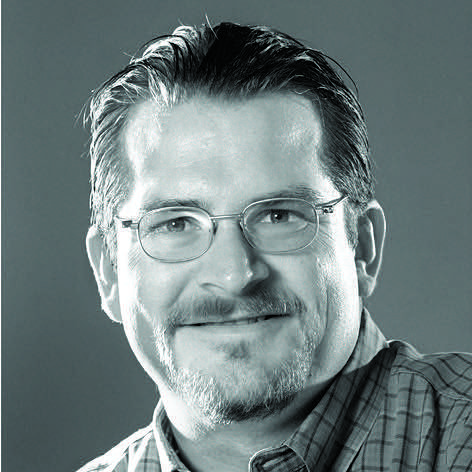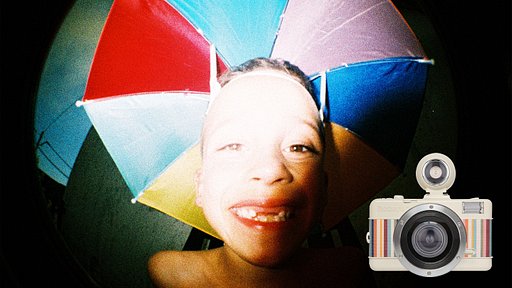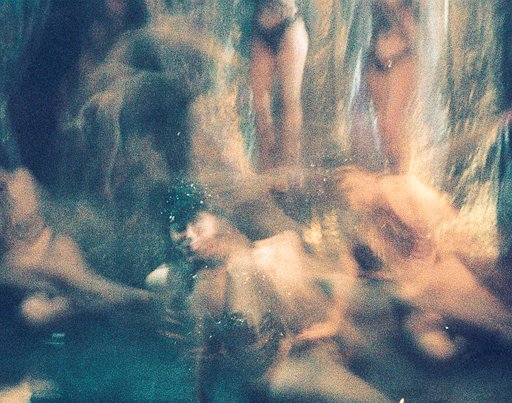An Interview with the Prolific Camera Collector Allan Detrich
14 Share TweetAllan Detrich is a mild-mannered freelance photographer by day, and an unbelievably prolific collector of Diana (and Diana clones) by night. Over the years, he has amassed what is surely the world’s most comprehensive and stunning assortment of Diana cameras. This treasure trove was coined “The Detrich Collection” and purchased by the Lomographic Society in the Summer of 2007.

Hello Allan! You have amassed what is surely one of the world’s most comprehensive Diana collections. What inspired you to start this staggering task? And when did you begin collecting them?
I started the collection when I attended the Ohio Institute of Photography. We had to use one of the Diana or clone type cameras for an assignment. I loved the dream-like effect and the simplicity of its use. I found different models at flea markets and garage sales. I had maybe 15 different types by the year 2000. But with the invention of the Internet and eBay, my collection grew by leaps and bounds from 2000 to the present. On a daily basis I would look on eBay for different names, listed under Diana, and when I found a new name, I would record it and then try to win it for the best possible price.
Out of your entire collection of Diana and Diana clones, which camera is your absolute favorite?
I really must say that the Playtime Candid Camera is my favorite Diana clone of all time. It is the one with the red plastic top, in place of the usual boilerplate blue color. I got my hands on one in a really nice box at a camera show in the year 2002. I paid $97.00 for it and I thought I paid a fortune for it. The red color was so unusual; I thought it was well worth it. I posted the photos on my website, and a month or two later I was offered $500.00 for it by someone in Japan. I knew at that point that I had made a good purchase.
Tell us the most insane or hilarious story behind one of your Diana purchases.
I purchased a collection of Dianas and clones from someone who had seen my Diana web page. It consisted of at least 30 cameras — some of which I already had and some of which I did not. But one of the cameras in the collection was the “Future Scientist Flash” photography kit. This, as far as I know, is a one-of-a-kind camera and kit. The entire kit had a developing tray, chemical, tongs, instructions, a safelight and more, completely intact. The box was not broken or crushed, and it was an amazing find.

Name three reasons why every photographer should give the Diana a try.
(1) It is photography at its simplest: no gadgets, no settings or focusing. It lets the photographer concentrate on the subject and composition. (2) The camera is very forgiving; it lets you get away with bad lighting. (3) It levels the playing field for all photographers. It lets the photographer’s talent show through because if a photographer can take a great photo with a Diana, they are truly a great photographer.
Please give us one juicy tidbit of Diana knowledge that almost no one knows.
Here is a very little know fact about the Sinomax Diana Camera clone in the form of a letter from Maud Ramadan, who is pictured on the side of the box.
A letter from Maud Ramadan, London England
Hi Allan,
Thanks for your e-mail. Yes, that’s me! How astonishing! When I
thought about what I would write for you I realized that what I know is
a lot about the company and very little about the camera itself. But I’ll
tell you and hope that some of it is of interest or use to you.
My company was called Sino Trading Company. The company’s business
was import/export with the Far East - importing from Hong Kong various
stuff like plastic flowers, ‘fancy goods’ and clothing and exporting scientific
& agricultural equipment to China (how funny that seems now!).
It was a very small company with two directors, who were cousins, a
shipping manager, a transport manager and an accountant, as well as
various clerks. I joined it in 1960 straight from school at the age of 16 as
a junior clerk and I stayed for 7 years, by which time I had climbed quite
well up the ladder. There were about 12 of us to begin with but business
boomed and the numbers grew. It was a very happy office. In the mid
1960s several of the girls used to spend their lunch hour at the Cavern, a
jazz club a few hundred yards from our office block, listening to various
groups, including the Beatles, doing lunch time sessions. I never went -
I was a snobby jazz fan and could only deplore their poor taste!
Eventually, the company expanded and moved from Liverpool to an
industrial development in Runcorn, further along the Mersey. I left
shortly after that.
The managing director was Denis Rattle, a flamboyant character
(who reputedly had played jazz piano with the Stanley Black Orchestra),
and he dealt with the import business. I worked on this side of the
company. His cousin, Ronald Trendell was a gentleman and he ran the
export (the serious) side of things - his favorite word was ‘efficiency’.
The firm was very well run, hence its quiet success. The import side was
divided into two sections and (unfortunately for this story) the camera
was not handled by my section.
Denis Rattle made periodic trips to Hong Kong where we had 4 main
suppliers. I don’t know which of these supplied the camera. One day
he took me up to the roof of the building where we had our office (the
Corn Exchange in Liverpool city centre) and took some photographs of
me with his very expensive Leica camera. He didn’t tell me why but I
was probably about 17or 18 (judging from the ‘blancmange’ hair style!)
and he was the managing director so I didn’t ask. Then some months
later the Sinomax camera arrived and there I was on the side of the box.
On the other side Denis had placed a picture of his son, Simon, as a baby
Simon was at that time about 8 or 9, I suppose. He often came into the
office with his dad on a Saturday morning, to have a play with the typewriters
and to chat to whoever was in that week.
We used to play ‘composers’ which was Simon’s made-up game of
going through the alphabet and alternately having to find a composer
with a name beginning with a particular letter. I don’t remember him ever
being stuck, whereas I often had to make up a name so he wouldn’t win.
I never got away with it though - he’d always say, ‘That’s funny. I’ve never
heard of him.’ He inherited his dad’s musical talent and became a superb
conductor. I remember being overwhelmed at a performance of Porgy &
Bess which he conducted at the Liverpool Philharmonic Hall. He is now
Sir Simon Rattle, conductor of the Berlin Philharmonic Orchestra.
After leaving Sino T.C. I became half of a publishing partnership with
a family friend called Fritz Spiegl. He had the ideas for the books about
local history and local humor and I did the administration using the
good training I had had at Sino TC. So, my career was not as illustrious
as my co-star on the Sinomax box, but Scouse Press was good fun for the
next few years, until I found my true vocation - as a mother.
That’s the background and I’m sorry that I can’t tell you any more about
the camera itself. As I said, my department didn’t handle it so I don’t
know how many we imported or how many years we sold it. I can’t remember
it being a runaway success, though. I used to see it occasionally
in shop windows in Liverpool and I suppose it was sold throughout the
country.
I hope there’s something of interest that you can extract from these ramblings.
You have my picture as a teenager and you asked for a current one for comparison.
Unfortunately I can’t do this because my computer is primitive and I have no scanner.
But if you really think you could use one, my sons have up-to-the minute technology
and I could ask one of them to e-mail one to you.
Kind regards,
Maud Ramadan
Thursday, November 25th 2004
If the Diana was an animal (land, air, or sea), then what do you feel it would be?
This is a tough question. I think after some deliberation, I would liken it to an alligator. Alligators have poor vision and see images in a blurred fashion. The species overall have not changed much in the scheme of evolution. Like the Diana, it is a basic machine. The camera is used for “snap” shots, likened to the sound of the jaws of the gator on motion, and even one clone is called the “Snappy.”
What particular personality trait is crucial for taking great Diana shots?
A quick eye and shutter finger, imagination and an artful eye.
Do you feel that the Diana lends itself more to color or black and white shots?
I think that Diana photographs look better in black and white. Black and white is more forgiving and this is needed when photographing with the Diana camera. More can be done with contrast and this makes a good Diana image really pop.
If the director of the Great Wall Plastics Factory was sitting right next to you, what would you want to tell them?
I would like to get the figures on how many of the Diana cameras vs. the different clones have been produced in the past. It always amazes me that a Diana camera will sell for nearly $100.00 on eBay, when a rarely seen clone will sell for just $25.00 or less. I can almost guarantee you that there are fifty times more Diana cameras on the market than clones, but people want the “Diana” name.
Any words of advice for new Diana shooters?
Use any of the Diana, or Diana clones: they are all the same camera and give the shooter basically the same effect. If you are looking for different effects, try different cameras. All vary slightly, but just going for the Diana camera for the “Diana” name can cost you a bundle. You can usually buy a couple of clones for the price you will pay for a “Diana,” this will let you experiment more while finding your own style in the toy camera area.
2018-07-04



























Aucun commentaire